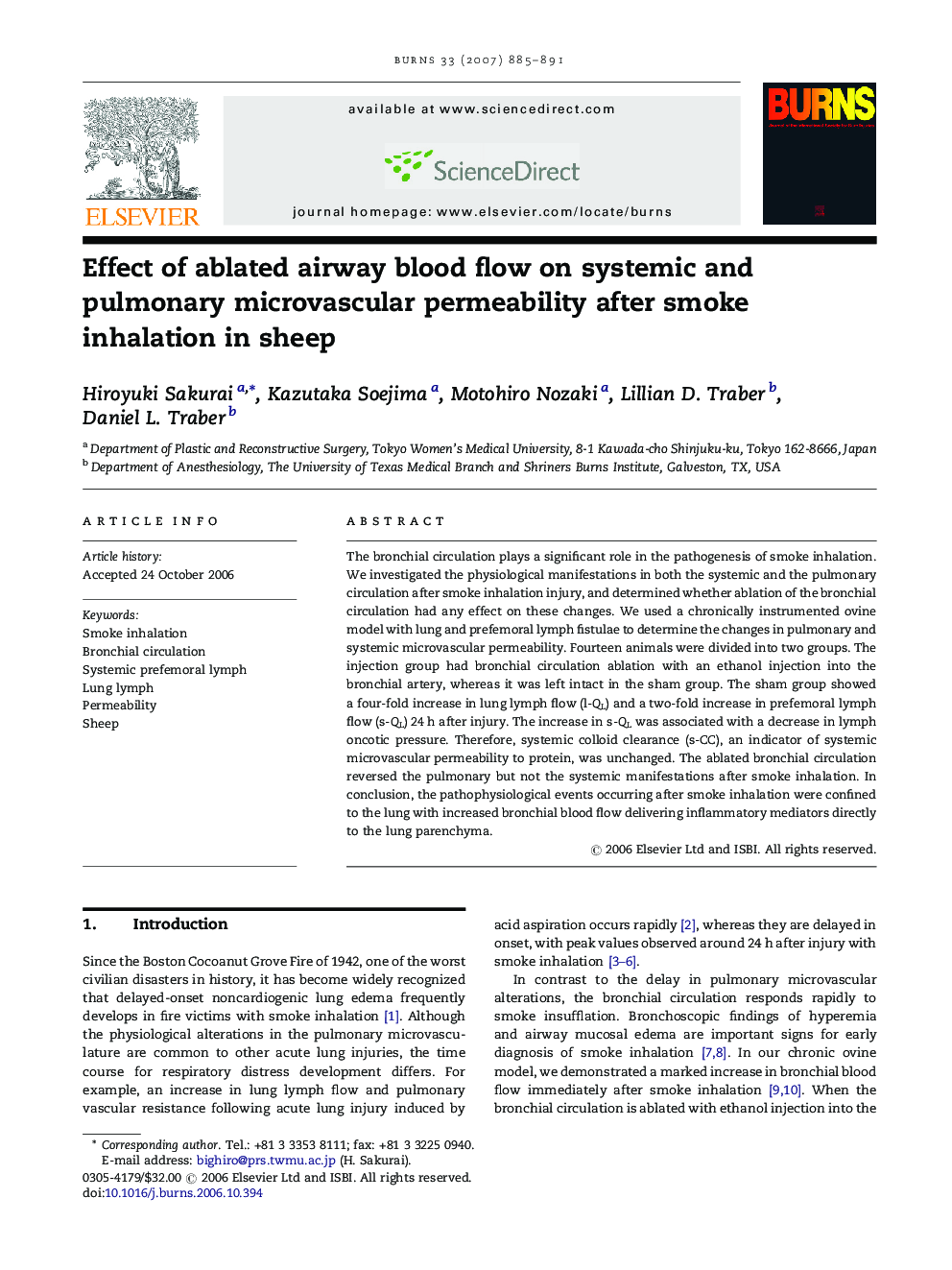| Article ID | Journal | Published Year | Pages | File Type |
|---|---|---|---|---|
| 3106591 | Burns | 2007 | 7 Pages |
The bronchial circulation plays a significant role in the pathogenesis of smoke inhalation. We investigated the physiological manifestations in both the systemic and the pulmonary circulation after smoke inhalation injury, and determined whether ablation of the bronchial circulation had any effect on these changes. We used a chronically instrumented ovine model with lung and prefemoral lymph fistulae to determine the changes in pulmonary and systemic microvascular permeability. Fourteen animals were divided into two groups. The injection group had bronchial circulation ablation with an ethanol injection into the bronchial artery, whereas it was left intact in the sham group. The sham group showed a four-fold increase in lung lymph flow (l-QL) and a two-fold increase in prefemoral lymph flow (s-QL) 24 h after injury. The increase in s-QL was associated with a decrease in lymph oncotic pressure. Therefore, systemic colloid clearance (s-CC), an indicator of systemic microvascular permeability to protein, was unchanged. The ablated bronchial circulation reversed the pulmonary but not the systemic manifestations after smoke inhalation. In conclusion, the pathophysiological events occurring after smoke inhalation were confined to the lung with increased bronchial blood flow delivering inflammatory mediators directly to the lung parenchyma.
